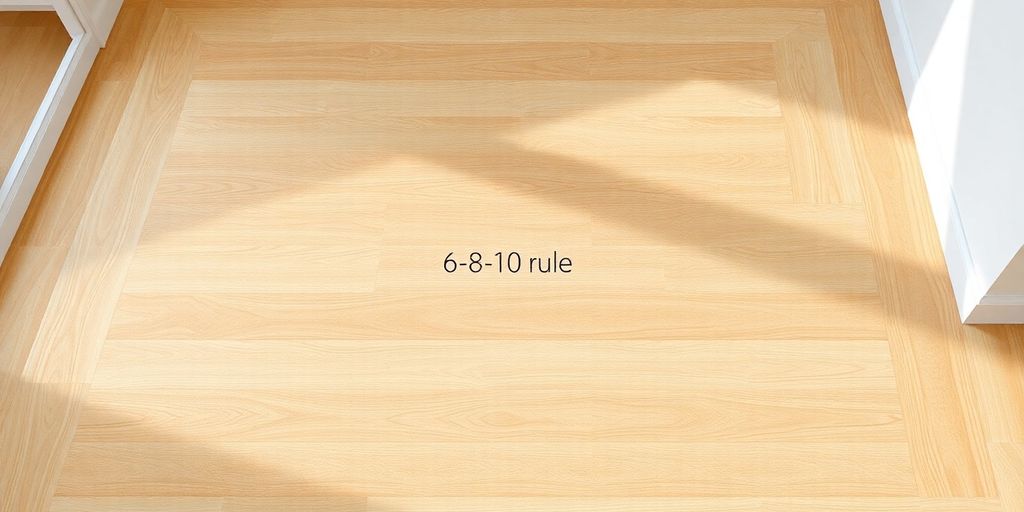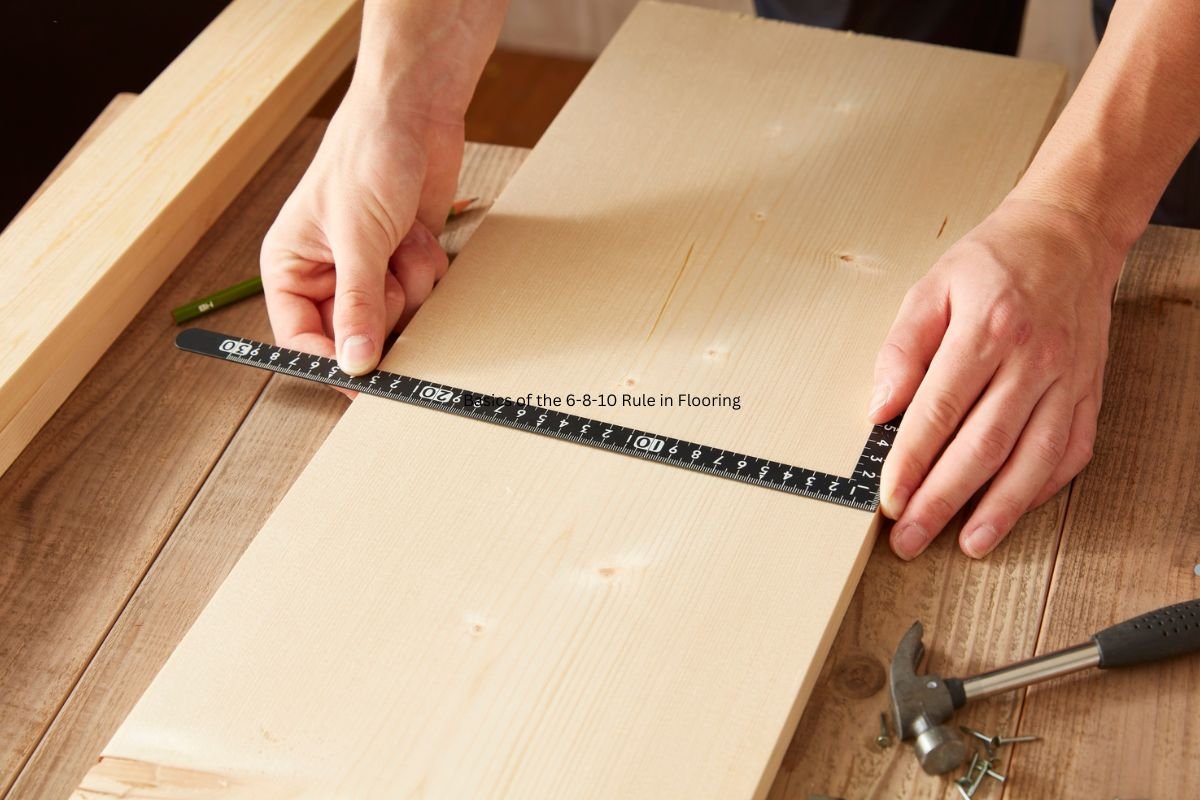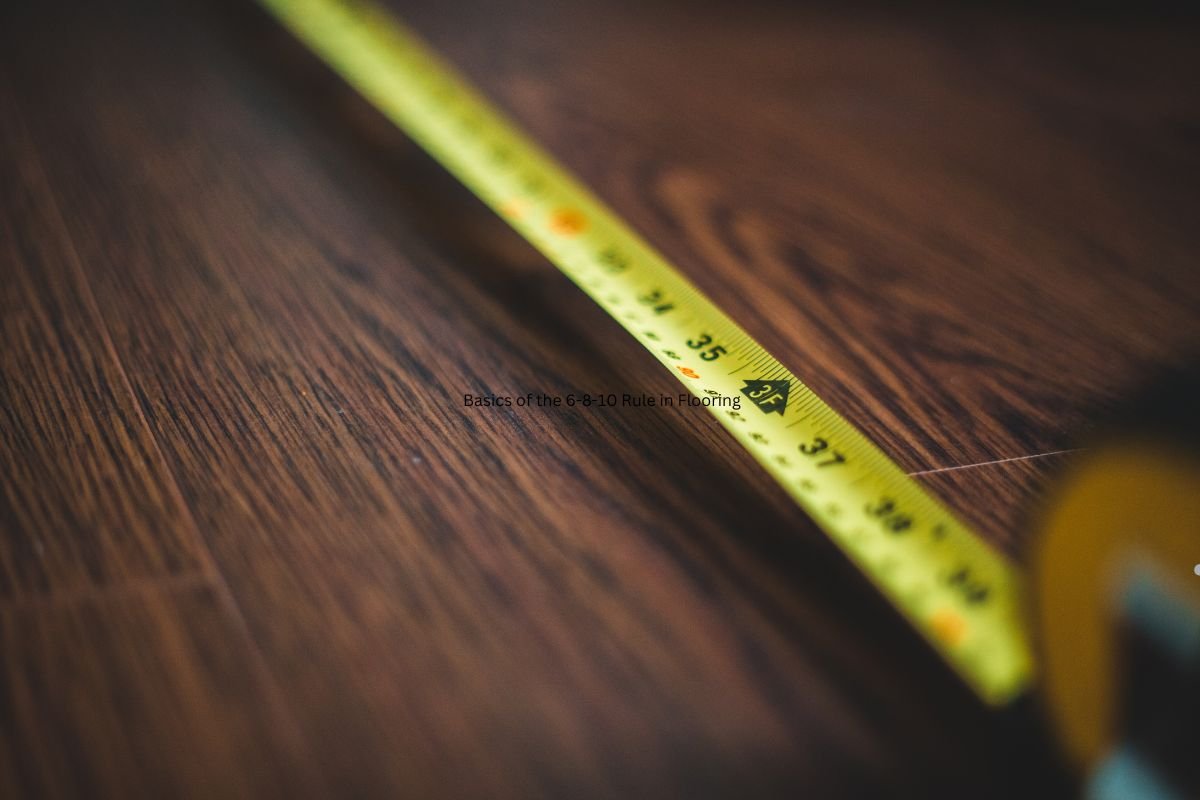
If you’ve ever laid flooring, you know how critical it is to get your lines straight and your angles perfect. The 6-8-10 rule in flooring is a simple yet powerful method to ensure your space is squared up before you start. Whether you’re a pro or a DIYer, this guide will walk you through everything you need to know about using this technique to achieve flawless results.
Key Takeaways
- The 6-8-10 rule is an easy and reliable way to ensure your flooring layout is perfectly square.
- This method is a scaled-up version of the 3-4-5 rule, offering better accuracy for larger spaces.
- Precision is crucial in flooring to avoid alignment issues and material waste.
- Using proper tools like chalk lines and tape measures simplifies the process.
- The 6-8-10 rule can also be applied beyond flooring, such as in framing and tiling projects.
Whether you’re working on tiles, hardwood, or laminate flooring, this method guarantees that every piece fits snugly without awkward gaps or misalignments.
Understanding the Basics of the 6-8-10 Rule in Flooring

What Is the 6-8-10 Rule?
The 6-8-10 rule is a practical method rooted in geometry, used to create perfectly square layouts in flooring projects. It’s based on the Pythagorean theorem, where the square of the hypotenuse equals the sum of the squares of the other two sides in a right triangle. In simple terms, you measure 6 units along one line, 8 units along a perpendicular line, and if the diagonal between the two points measures exactly 10 units, you’ve got a perfect 90-degree angle. This ensures your flooring starts square, which is crucial for a professional finish.
How It Differs From the 3-4-5 Rule
While both rules rely on the same geometric principles, the 6-8-10 rule is often preferred for larger spaces. The 3-4-5 rule is great for smaller areas or quick checks, but scaling up to 6-8-10 provides greater precision over longer distances. For example, in larger rooms or open layouts, the longer measurements reduce the impact of small errors, ensuring accuracy over a wider area.
Why Precision Matters in Flooring
Precision isn’t just about aesthetics—it’s about functionality too. Misaligned tiles or planks can lead to gaps, uneven surfaces, and wasted materials. A square starting point prevents cascading errors as you progress with your installation. Plus, it saves time and frustration by eliminating the need for constant adjustments. In flooring, getting it right from the start makes all the difference.
The 6-8-10 rule isn’t just a tool; it’s a foundation for precision in construction. Whether you’re building a deck, framing walls, or designing a stunning tile flooring feature, this method ensures accuracy every step of the way.
Step-by-Step Guide to Applying the 6-8-10 Rule

Marking Your Reference Lines
Before you do anything, start by marking a clear reference line. This is your baseline, which is usually parallel to a wall or centered in the room. Use a chalk line or a laser level for accuracy. This step is critical because every other measurement will rely on it. Double-check that the line is straight and doesn’t curve or bow.
Measuring and Verifying Right Angles
Now comes the fun part: applying the 6-8-10 rule. Here’s how you do it:
- Pick a starting point on your baseline.
- Measure 6 feet (or any unit) along the baseline and mark that spot.
- From the same starting point, measure 8 feet perpendicular to the baseline and mark that spot too.
- Measure the diagonal between the two marked spots. If it’s exactly 10 feet, congratulations—you’ve got a perfect 90-degree angle. If not, adjust your marks until the diagonal measures 10 feet.
This method works because it’s based on the Pythagorean theorem. It’s simple geometry, but it’s incredibly effective.
Scaling the Rule for Larger Spaces
For bigger rooms or outdoor projects, you might need to scale up. Instead of 6-8-10, you can use multiples like 12-16-20 or even 18-24-30. The principle remains the same, but the larger measurements help maintain accuracy over greater distances.
Pro tip: Always recheck your angles as you scale up. Small errors can become big problems in larger spaces.
By following these steps, you’re setting yourself up for a perfectly square layout, whether you’re laying tile, squaring a deck, or starting a foundation. Precision here saves you headaches later. Call us today for expert guidance and a flawless finish!
Common Mistakes to Avoid When Using the 6-8-10 Rule
Overlooking Accurate Measurements
Accurate measurements are the backbone of the 6-8-10 rule. Even a tiny error in marking your lines can throw off the entire layout. Always double-check your measurements and use a reliable tape measure. If you’re working in a larger space, consider scaling up the rule to maintain precision. For example, instead of 6, 8, and 10 feet, you might use 12, 16, and 20 feet for greater accuracy over longer distances.
Skipping Rechecks During Installation
It’s tempting to assume everything is perfect after the initial setup, but that’s a risky move. Floors shift, tools slip, and mistakes happen. Periodically recheck your angles and lines as you work. A quick verification can save you from discovering a misalignment halfway through the project, which could mean tearing up and redoing sections.
Using Improper Tools for Marking
The tools you use can make or break your results. For instance, a dull chalk line or a poorly calibrated laser level can lead to crooked lines. Invest in quality tools like a sharp chalk line, a sturdy tape measure, and a square. These might cost a bit more upfront but will save you headaches and time in the long run.
A little extra time spent on preparation and rechecking can save hours of frustration later. Precision at the start ensures a smoother process overall.
Benefits of Using the 6-8-10 Rule in Flooring Projects
Achieving Perfectly Square Layouts
The 6-8-10 rule is a game-changer when it comes to creating square layouts. By ensuring your angles are exactly 90 degrees, you eliminate the risk of skewed lines, which can throw off the entire flooring pattern. A perfectly square layout not only looks professional but also simplifies the installation process.
Reducing Material Waste
Using the 6-8-10 rule can save you a significant amount of material. When your layout is square from the start, you avoid unnecessary cuts and adjustments, which often lead to wasted pieces. Precise measurements mean fewer mistakes, and fewer mistakes mean less waste. This is especially important for costly materials like high-end tiles or premium hardwood, where every inch counts.
Ensuring Professional-Quality Results
Nothing screams “amateur” more than a crooked floor. The 6-8-10 rule helps you achieve a polished, professional finish that stands the test of time. By starting with accurate angles, you set the foundation for a flawless installation. This not only boosts the aesthetic appeal of the space but also adds to its overall durability. Plus, a well-laid floor can increase the value of your property, making it a wise investment for homeowners and contractors alike. Call us today to ensure your flooring is done right the first time!
Taking the time to apply the 6-8-10 rule might feel tedious at first, but the payoff in precision and quality is well worth it.
Tools and Techniques to Simplify the 6-8-10 Rule
Essential Tools for Accurate Measurements
To make the 6-8-10 rule work smoothly, you need a few basic tools. A good tape measure is non-negotiable. Look for one with clear markings and a locking mechanism to keep your measurements steady. A chalk line is also a must-have for marking straight and visible lines on your floor. Don’t forget to grab a sturdy framing square—this will help you double-check angles. For larger spaces, a laser level can be a game-changer, projecting precise lines over longer distances.
Tips for Using Chalk Lines Effectively
Using a chalk line might seem simple, but there’s a bit of an art to it. Start by loading it with high-quality chalk—this ensures the lines are bold and easy to see. When snapping the line, make sure both ends are secured tightly; any slack can throw off your alignment. For best results, snap the line firmly but not too hard, as too much force can cause a messy or broken line. If you’re working on a surface that doesn’t hold chalk well, consider spraying a light adhesive over the area first.
Leveraging Technology for Precision
Technology can take the guesswork out of applying the 6-8-10 rule. Laser distance measurers, for instance, can provide pinpoint accuracy when measuring long distances. Digital angle finders are another handy tool—they calculate angles for you, ensuring your layout is perfectly square. Some advanced tools even come with built-in guides for common geometric rules, making it easier to get the job done right. While these gadgets aren’t strictly necessary, they can save time and improve accuracy, especially for larger or more complex projects.
Advanced Applications of the 6-8-10 Rule Beyond Flooring
Squaring Foundations and Decks
Using the 6-8-10 rule for foundations and decks ensures that these critical structures are perfectly square, which is essential for their stability and durability. Here’s how it works:
- Start by marking a baseline along one edge of the foundation or deck area.
- Measure 6 feet along this line and make a mark.
- From the same starting point, measure 8 feet perpendicular to the baseline and mark this spot.
- Measure the diagonal between the two marks. If it equals 10 feet, your corner is square. If not, adjust the marks until they align perfectly.
This method simplifies the process of laying out large areas and ensures a solid start for the rest of your project.
Aligning Walls and Framing
When framing walls or aligning studs, the 6-8-10 rule can be a lifesaver. It helps ensure that your walls are straight and meet at proper right angles. Precision here avoids issues like misaligned drywall or uneven wall intersections later on. Simply apply the rule to your layout lines before nailing or screwing anything into place. This small step can save you from big headaches down the line.
Creating Symmetrical Tile Patterns
For tiling projects that go beyond simple floors, like backsplashes or feature walls, symmetry is key. The 6-8-10 rule helps you establish a grid that keeps your tiles perfectly aligned. This is especially useful for intricate patterns where even a small deviation can ruin the entire design. By starting with a square base, you can confidently execute complex layouts without constant rechecks.
Wrapping It Up
So, there you have it—the 6-8-10 rule is your go-to trick for squaring up spaces like a pro. It’s simple, reliable, and works every time, whether you’re laying tile, building a deck, or just making sure your lines are straight. Sure, it takes a little patience and some careful measuring, but the payoff? Totally worth it. Once you’ve got this method down, you’ll wonder how you ever managed without it. Now grab your tape measure, chalk line, and maybe a buddy to help out, and get to work. You’ve got this! Need more tips or have questions? Contact us—we’re here to help!
Frequently Asked Questions
What is the 6-8-10 rule in flooring?
The 6-8-10 rule is a simple method based on the Pythagorean theorem. It helps ensure your flooring layout is perfectly square by measuring 6 units on one side, 8 units on another side forming a right angle, and confirming the diagonal measures 10 units.
How does the 6-8-10 rule differ from the 3-4-5 rule?
Both rules use the same principle of the Pythagorean theorem, but the 6-8-10 rule is a scaled-up version of the 3-4-5 rule. It’s better suited for larger spaces, while the 3-4-5 rule is ideal for smaller areas.
Why is squaring a room important for flooring?
Squaring a room ensures that your flooring is aligned properly, preventing crooked or uneven layouts. This leads to a professional-looking finish and reduces material waste.
Can I use the 6-8-10 rule for projects other than flooring?
Yes, the 6-8-10 rule is versatile. It’s commonly used for squaring foundations, decks, walls, and even creating symmetrical patterns in tile work.
What tools do I need to apply the 6-8-10 rule?
To use the 6-8-10 rule, you’ll need a measuring tape, chalk line, and possibly a helper to hold the tape in place while marking points.
What are common mistakes to avoid when using the 6-8-10 rule?
Avoid skipping rechecks, using inaccurate measurements, or relying on improper tools. Always double-check your diagonal measurement to ensure precision.

